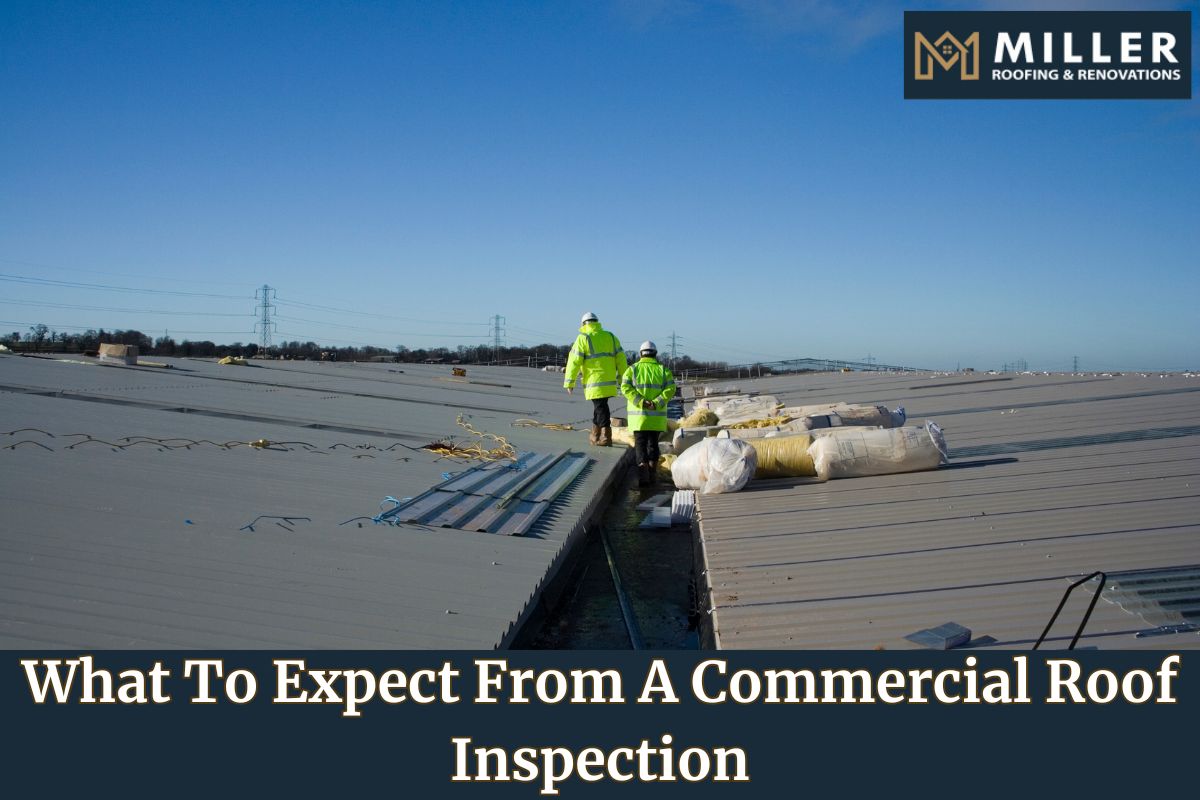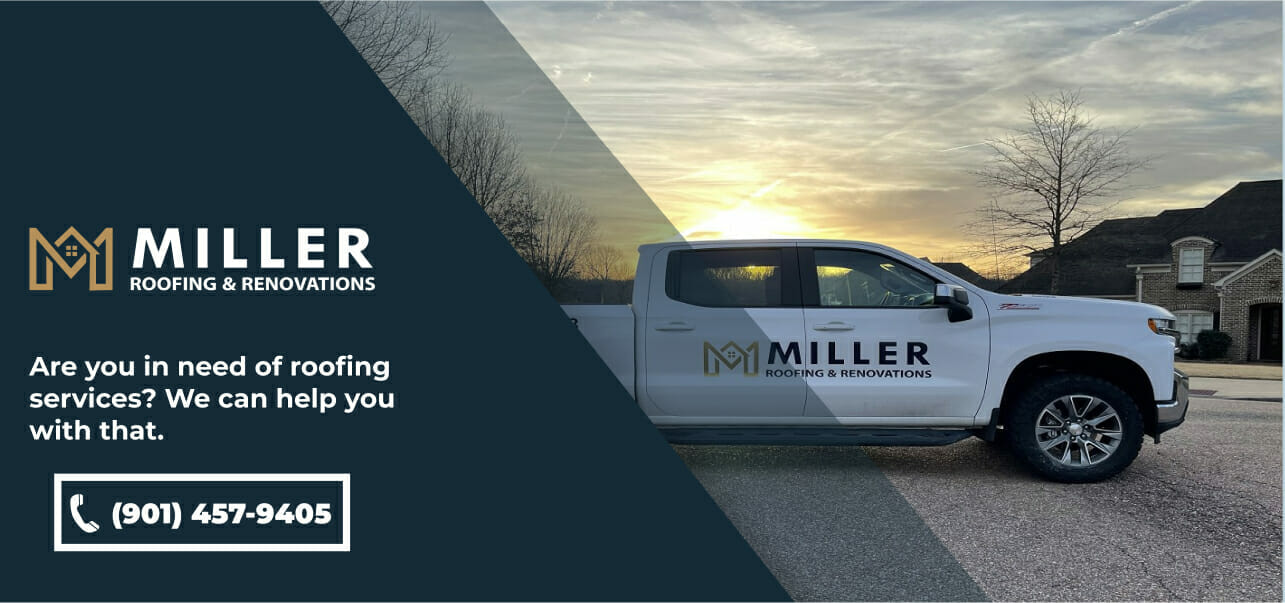Commercial real estate is an expensive asset that needs to be maintained on a regular basis to guarantee its longevity and security. Among the many maintenance tasks, roof inspections are particularly important for the building’s integrity. Ignoring roof upkeep can result in expensive damages and interruptions to business operations.
This blog post will explore the process of a commercial roof inspection, emphasizing the process, typical problems, and recommendations following the inspection.
Why Are Commercial Roof Inspections Important?
Regular checks on commercial roofs are really important. They help keep buildings sturdy, employees and customers safe, and save you money. By checking often, problems like leaks or damage can be found early and fixed before they get worse. Inspections also make sure properties are in compliance with building codes, are energy efficient, and make a good impression for the business. It’s a smart move to inspect roofs regularly, like once or twice a year, to protect the building below and avoid high costs from ignoring roof problems.
What Happens During A Commercial Roof Inspection
Commercial roofing inspections are important because they let you identify possible problems early on before they become serious, which will ultimately save you time and money. Let’s delve in to understand what you can expect from a commercial roofing inspection:
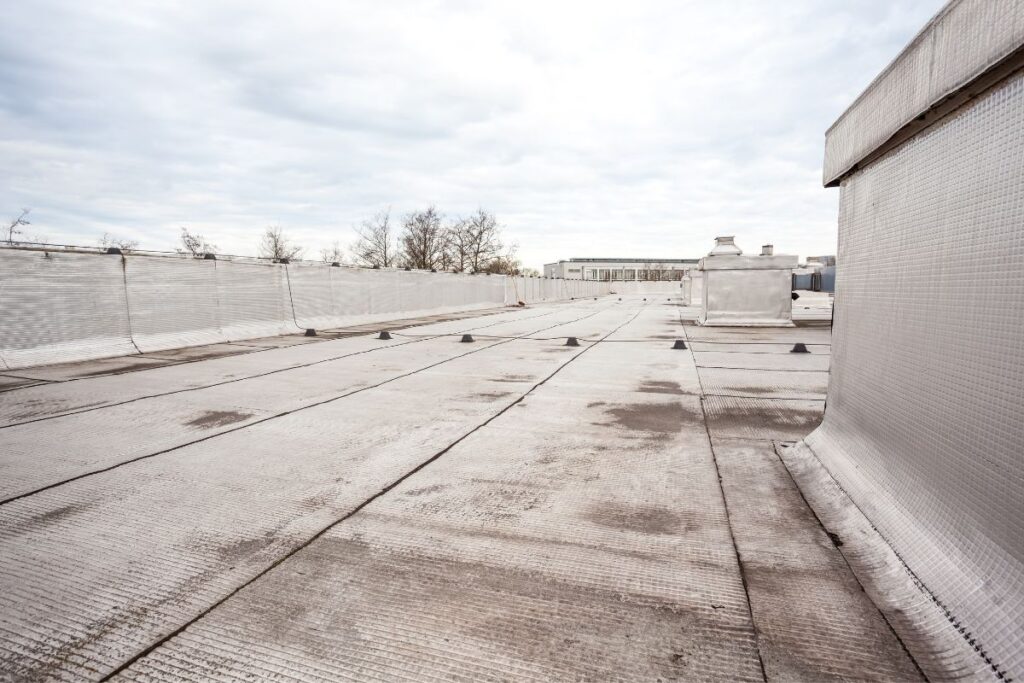
#1. Pre-Inspection Preparation
For a smooth inspection, there are a few essential steps that a property owner must take. First, clean the roof of any debris like leaves and branches and make sure the roofers have safe access. Notify tenants or neighbors, and clear off the furniture or any other obstructions to avoid injuries. Collect any documentation that will help with the inspection, such as maintenance logs and previous reports. These actions improve the process’ efficacy and streamline it.
#2. On-Site Inspection Process
Using specialized equipment, the professionals will closely examine the membrane, flashing, and drainage systems, among other roof components, for damage or weaknesses during the inspection. To guarantee an in-depth assessment of the roof’s condition, they will also check the building’s exterior and interior for signs of damage or water leaks.
#3. Common Issues Found During Inspections
1. Lack of insulation:
When insulation is insufficient, buildings may experience higher energy costs as heating and cooling efforts are less effective. This can lead to discomfort for the people inside and increased strain on HVAC systems.
2. Damaged flashing:
Flashing, typically made of metal, is essential for sealing joints and preventing water intrusion. When damaged or improperly installed, they can allow water to get into the building, leading to leaks and potential structural damage.
3. Damaged roofline:
Cracks or other damage to the roofline can compromise its ability to repel water effectively. This can cause leaks and structural issues if left unaddressed, potentially causing damage to interior spaces and building materials.
4. Water stains or leaks:
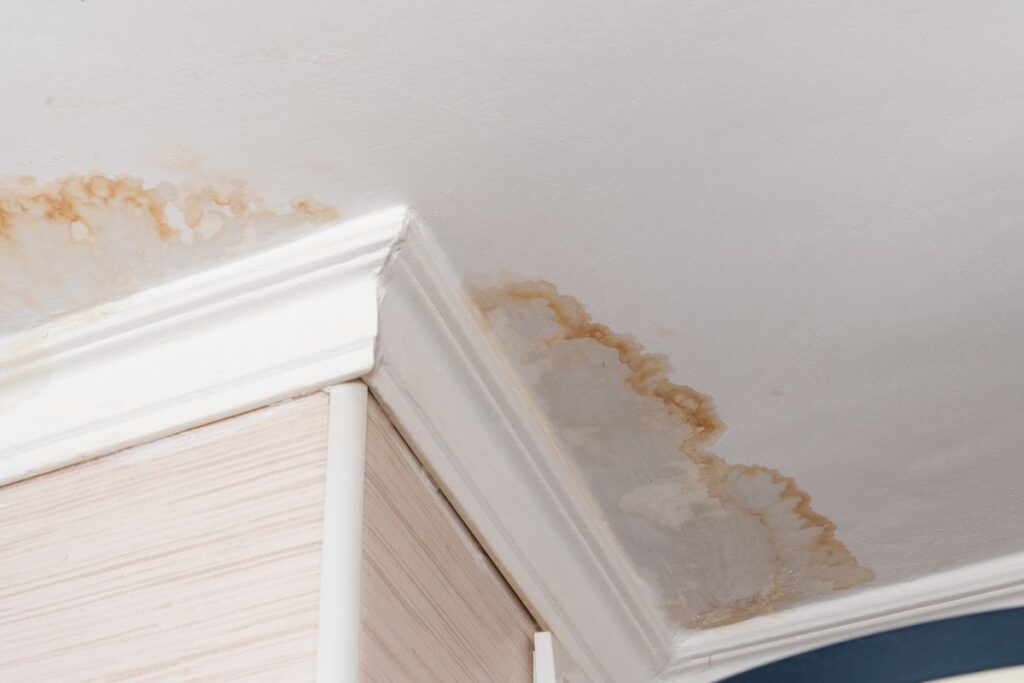
Roofing membrane punctures are common in low-slope or flat roofs, and are caused by factors like foot traffic or falling debris. These punctures create openings for water to infiltrate, resulting in leaks, damage, and potential structural compromise.
5. Mold or mildew growth:
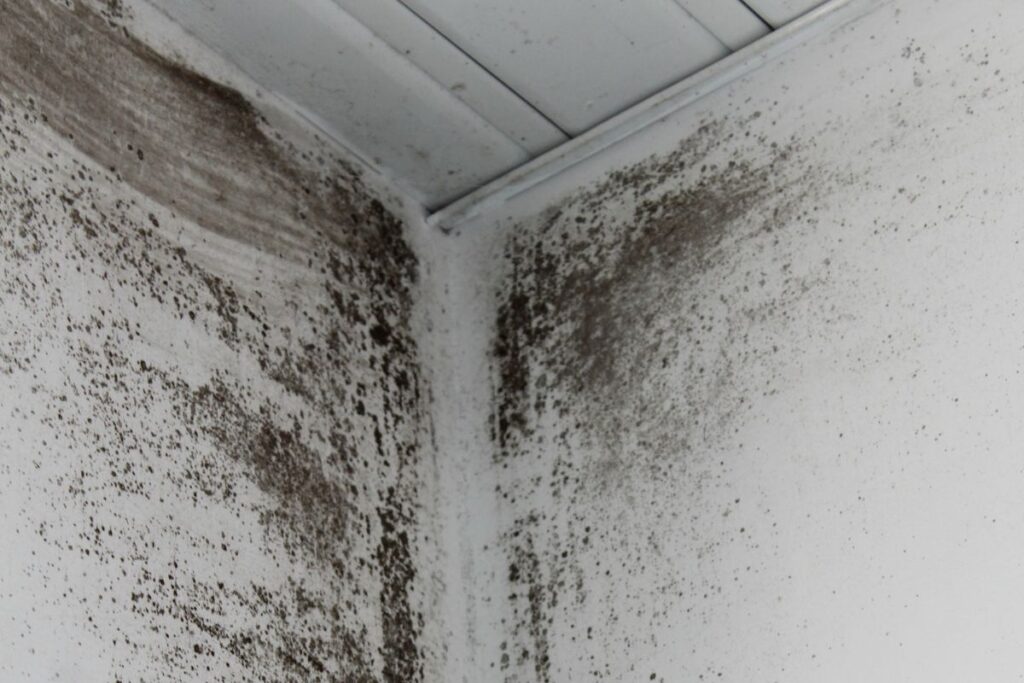
Mold and mildew growth are common issues resulting from moisture problems within the roofing system, and need timely resolution to prevent health hazards and structural damage.
6. Sagging or uneven roofline:
Indicators of structural problems with the roof’s support structure could be a sagging or uneven roofline. It is imperative that these concerns are assessed right away in order to stop additional harm.
7. Poor ventilation:
Without enough ventilation, moisture can accumulate in enclosed areas, which makes the perfect conditions for mold growth. Moisture buildup can also cause the roofing materials to age prematurely, leading to an earlier roof replacement or severe damage. For these parts to stay leak-free and not sustain water damage, regular maintenance is necessary.
8. Gutter and drainage issues:
Inadequate drainage systems or clogged gutters can lead to water accumulation on the roof, potentially causing leaks, water damage, and deterioration of roofing materials. Properly installed gutters are crucial for directing water away from the building’s foundation and roof.
9. Ponding Water:

Water pooling occurs on low slope or flat roofs when drainage systems are inadequate or if the roof surface is uneven. Accumulated water can lead to structural issues due to the added weight and degrade roofing materials, risking leaks and compromising the membrane’s integrity.
Also Read: 8 Essential Commercial Roof Repair Tips for Property Owners
#4. Post-Inspection Follow Up
The roofing professional will create a thorough report detailing their findings and suggestions for maintenance or repairs after the inspection is finished. This report is useful for setting priorities and carrying out the required tasks to guarantee the roof’s long-term durability and performance.
After the inspection, it’s critical to schedule any necessary repairs or maintenance as soon as possible. This could include repairing flashing that has been damaged, swapping out worn-out components, or taking care of any other problems that are affecting the roof’s functionality. Keeping up a regular maintenance schedule is also necessary to avoid issues down the road.
#5. Importance of Documentation
Keeping a thorough record of the roof’s condition over time requires documenting inspection findings. Well-informed decision making is made easier by photos and maintenance logs, which offer helpful details about the roof’s maintenance history. Businesses can monitor the status of maintenance and repair projects and efficiently plan for future requirements by maintaining these records. Plus, in the event of an insurance claim, keeping complete records can expedite the process and increase the chances that your claim will be approved.
How Much Does A Commercial Roof Inspection Cost?
In Tennessee, commercial roof inspection costs can vary, typically ranging from $75 to $700, with an average cost of $120 to $320. The total amount you pay will depend on where you live, labor rates in your area, and how the inspection was conducted, such as with drones or other specialized equipment.
Commercial roofing inspections are essential for detecting problems early, avoiding expensive repairs, and increasing roof longevity. Proper maintenance also helps extend the roof’s life beyond the warranty period and reduces energy costs.
Schedule a Professional Commercial Roof Inspection With Miller Roofing and Renovations
Preserving the value of your business means keeping your commercial roof in the best possible condition. You can save on expensive repairs and prevent unsafe situations by adhering to these basic maintenance guidelines and staying ahead of any problems. Frequent maintenance prolongs the life of your roof and protects your property, saving you money and effort down the road.
When it comes to professional commercial roof inspection services, Miller Roofing and Renovations is your trusted partner. With our thorough roof inspections, you can be assured that your commercial roof is in good hands. Trust Miller Roofing and Renovations to keep your roof well-protected and in top condition for years to come. Schedule your inspection with us today to maintain the integrity of your commercial property. Give us a call at (901) 457-9405.
